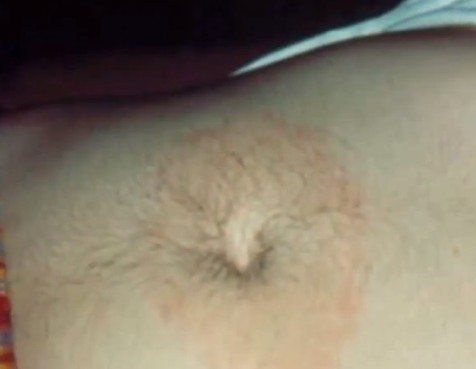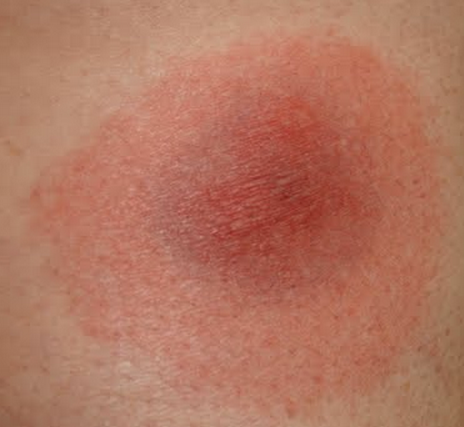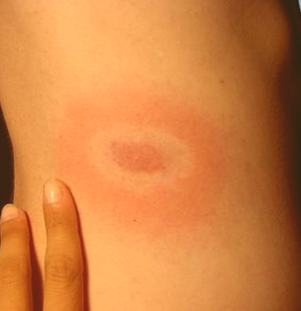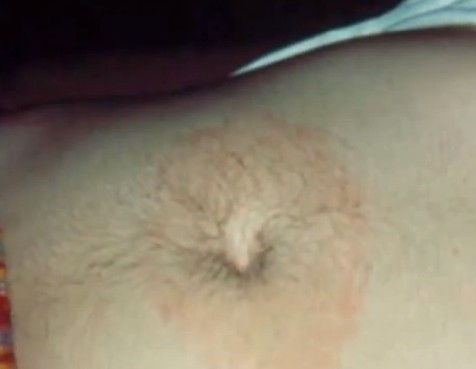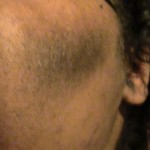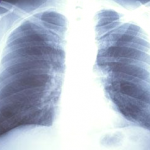Lyme disease is often said to occur due to tick bite. However, most of those who suffer from Lyme disease are not aware that they ever had a tick bite. Only 2% cases of tick bite converts into Lyme disease. The highest number of Lyme disease cases is recorded during late spring as well as early summer. Though all individuals are susceptible to Lyme disease, male ageing between 5 and 19 and over 30 years are more prone to the condition. Both male and female gender can be affected with the disease. If you are bitten by a tick then remove the sting of the tick using a tweezers. Removing the sting may be difficult but you need to do it patiently. Consult a doctor and seek advice.
There are several symptoms that may occur due to Lyme caused by tick. One of the symptoms of Lyme includes the rash formation. One of the common early symptoms of Lyme disease is a progressing rash called ‘erythema migrans’. The rash begins with redness of the surrounding area where tick bite is experienced. Often when the rash’s size increases the middle of the rash becomes clear, giving it an appearance of bull’s eye. Though sometimes it may not look like bull’s eye but it surely expands in size. The rash may increase to a larger size. Lyme disease rashes are not often painful or itchy. These rashes are often seen on thigh, groin area, armpit and torso. In around 60 to 80 percent of Lyme disease cases these rashes are recorded. But not all Lyme disease patients suffer from rashes. These rashes are not contagious which means that do not affect another individual on contact. In some cases Lyme disease rashes may be multiple which means that they do not occur due to several bites but the bacteria in one rash multiplies itself and causes more rashes.
Lyme disease rash may take a few days or even a week to show up. These bumps or rashes may be warm and tender to touch. The expansion of Lyme disease rash may not be immediate but may take a few weeks. Lyme disease rash often do not ebb away sooner but may progress further over days or weeks. These rashes are often mistaken with spider bite due to their appearance.
Other symptoms accompanying rashes
Apart from Lyme disease rashes there are other symptoms of the condition. Some of the symptoms may resemble flu’s signs for example fever, chills, tiredness, body pain, protruded gland, head pain, etc. In some cases only infection may be diagnosed and no other symptom may be recorded. In some severe situations Bell’s Palsy, weakness of limbs, meningitis, malfunctioned muscle movement may occur if Lyme disease is not treated sooner. Some other serious consequences include short term memory loss, drowsiness, insomnia, brain fog, speech problems, confusion, hindered concentration and migraine, etc, may also be suffered by affected person. There are also psychiatric issues which are recorded in some patients with Lyme disease.
Untreated Lyme disease may also manifest itself as serious pain in joint. It may also cause swelling if the condition is not addressed for weeks or months. Usually pain is experienced at the knees but the ache can also pass from the affected joint to another joint. In some individuals the condition can cause irregular heartbeats if the infection is left unaddressed for several weeks. In rare situation irregular heartbeats can persist for days or even weeks. Some other possible symptoms experienced along with Lyme disease rash include shooting ache, extreme tiredness, inflammation of eye and hepatitis.
Lyme Disease Rash treatment
The primary treatment for Lyme disease rashes includes use of antibiotic medicines. Skin anomalies caused due to this condition, such as rashes, are basically caused due to infection of Borrelia Burgdorferi which is a kind of bacteria. This infection is generally transmitted through ‘deer tick’ bite. Erythema migrans and acrodermatitis chronica atrophicans are some skin manifestations of Lyme disease. The first route of treatment of dealing with rashes caused due to this condition is oral antibiotics. If this does not provide any aid then antibiotics are given intravenously. In some cases tropical solutions such as lotions, etc, are also suggested to the patients, but yet the preferred treatment for treating the condition is antibiotic.
Both Erythema migrans and acrodermatitis chronica atrophicans can be treated using antibiotics. The early the treatment is adopted the better will be the results. Acrodermatitis chronic atrophicans is another kind of Lyme disease rash wherein discoloration of the skin is experienced. Eventually the affected region of skin may become thinner. There are also other types of Lyme disease rashes which are rarely recorded. The treatment of these rashes would greatly depend on the stage of the condition. Though the primary treatment of Lyme disease includes antibiotics, other medicines may be prescribed by your doctor to deal with associated symptoms. Hence, a combination of effective medicines as a comprehensive treatment for your condition can only be decided by a doctor.
Lyme Disease Rash Pictures
